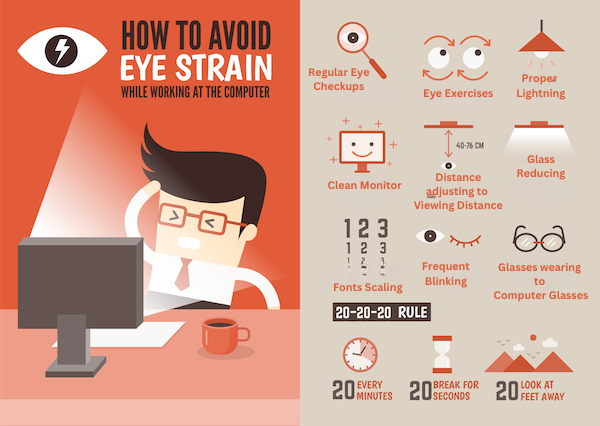
Conquering Computer Vision Syndrome: Preserving Ocular Health in the Digital Age
In our technology-driven world, many people spend hours daily in front of screens. This lifestyle can lead to a common issue known as Computer Vision Syndrome (CVS). Understanding and managing this condition is crucial for maintaining good eye health.
What is Computer Vision Syndrome?
Computer Vision Syndrome, also known as digital eye strain, encompasses various eye and vision-related problems. These issues result from prolonged computer, tablet, e-reader, and smartphone use. Symptoms of CVS include eye strain, headaches, blurred vision, and dry eyes. According to the American Optometric Association, these symptoms can be reduced with proper management.
Causes of Computer Vision Syndrome
Extended screen time is the primary cause of CVS. The blue light emitted by screens can strain the eyes, and the reduced blink rate while staring at screens can cause dryness and discomfort. Furthermore, poor lighting and improper viewing distances exacerbate these symptoms.

How to Prevent Computer Vision Syndrome
Adjust Your Workspace
To prevent CVS, start by optimizing your workspace. Position your screen about 20-24 inches from your eyes and slightly below eye level. Ensure that lighting in the room does not create glare on the screen. You can find more tips on setting up an ergonomic workspace here.
Follow the 20-20-20 Rule
To reduce eye strain, follow the 20-20-20 rule. Every 20 minutes, take a 20-second break and look at something 20 feet away. This practice helps relax your eye muscles and reduce fatigue.
Eye Exercises and Breaks
Incorporate regular eye exercises and breaks into your routine. Simple exercises, like rolling your eyes and focusing on distant objects, can alleviate strain. Moreover, frequent breaks away from the screen help refresh your vision.
Use Proper Eyewear
Consider using glasses designed for computer use. These glasses can filter blue light and reduce glare, making screen time more comfortable. Consult your eye care professional for recommendations on the best eyewear for your needs.
Managing Symptoms of Computer Vision Syndrome
Stay Hydrated and Blink Often
To combat dry eyes, drink plenty of water and remember to blink regularly. Blinking moistens your eyes and helps reduce dryness caused by prolonged screen use.
Use Artificial Tears
If you continue to experience dryness, use artificial tears to lubricate your eyes. Choose preservative-free drops to avoid irritation. Learn more about artificial tears and their benefits here.

When to See a Professional
If you experience persistent symptoms of Computer Vision Syndrome, seek professional help. An eye care specialist can provide a comprehensive eye exam and suggest appropriate treatments. They can also check for underlying conditions that may be contributing to your discomfort.
Conclusion
Computer Vision Syndrome is a prevalent issue in today’s digital age. By understanding the causes and implementing effective prevention strategies, you can maintain optimal eye health. Also, by adjusting your workspace, taking regular breaks, using proper eyewear, and staying hydrated are all essential steps in conquering CVS.
Take Action
Schedule an eye exam with your local optometrist to ensure your eyes are healthy and to get personalized advice on managing Computer Vision Syndrome.
Furthermore, by adopting these practices, you can protect your eyes and enjoy a more comfortable digital experience where convenience and visual comfort coexist, empowering you to navigate the digital realm with clarity and confidence.























